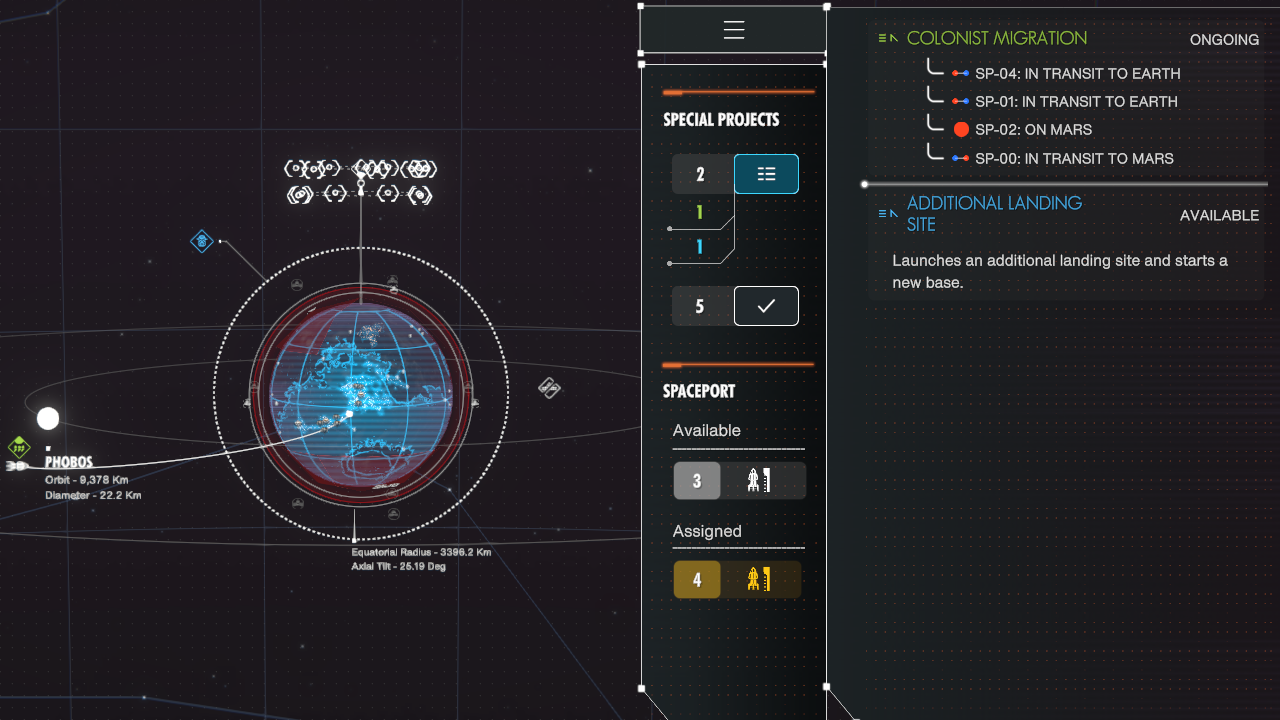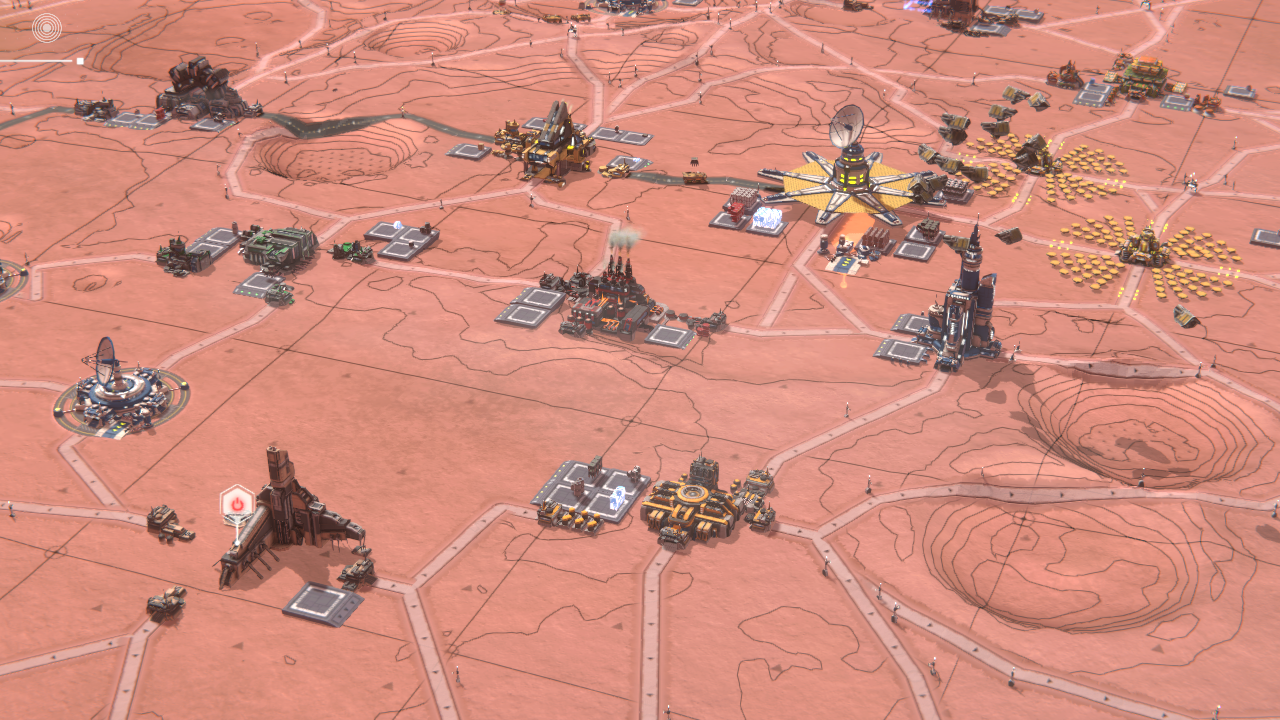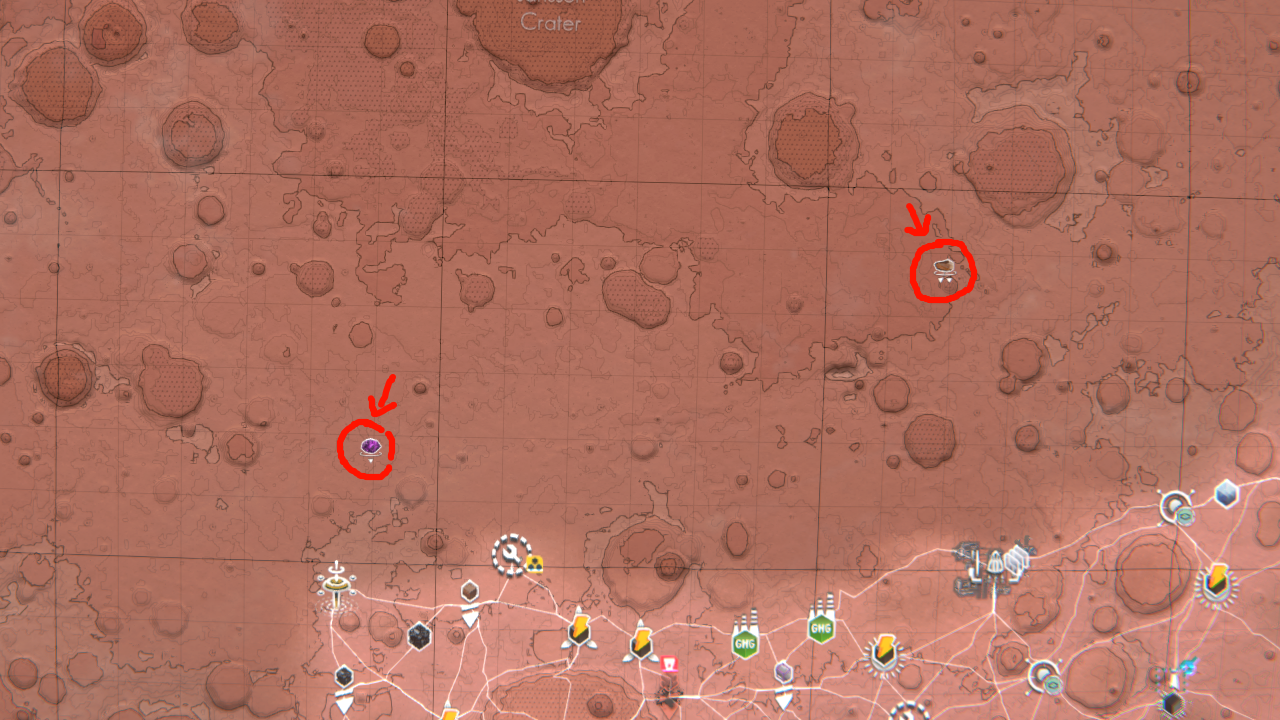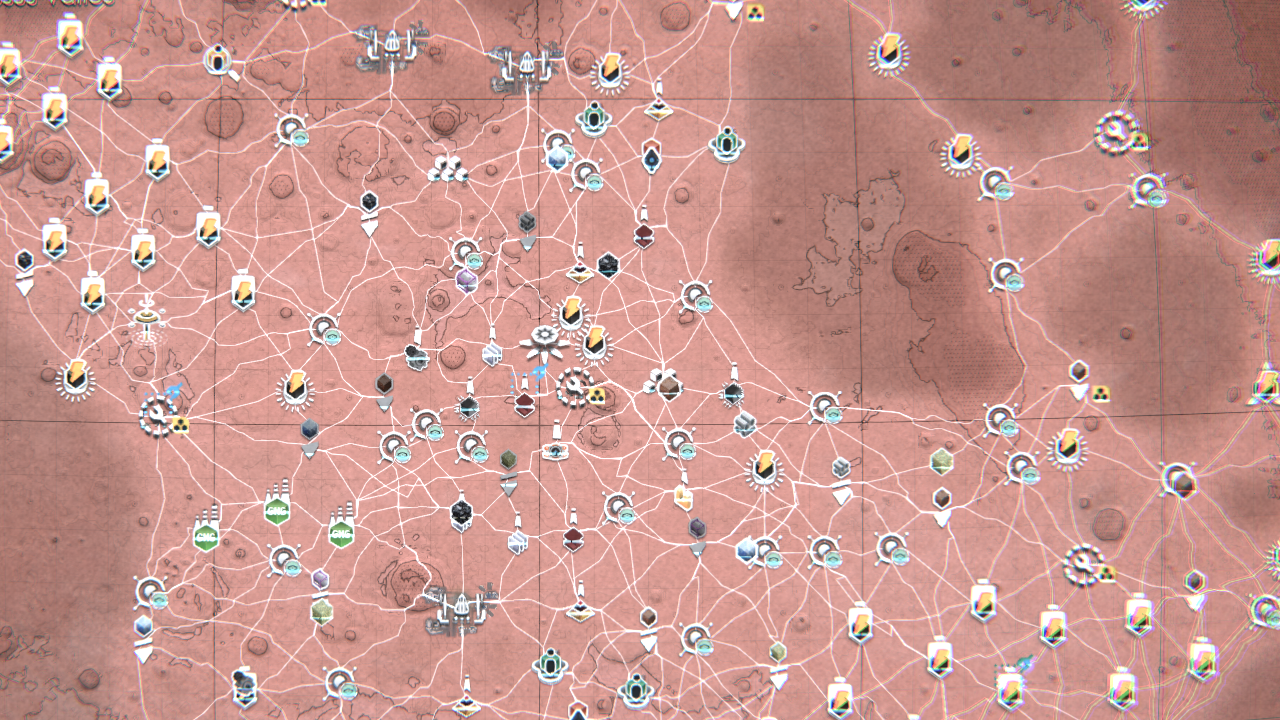quality of life really matters sometimes

I really enjoy playing colony building/simulation games like Dwarf Fortress, Rimworld, Prison Architect, and my favorite in the genre, Banished. I also love hard sci-fi.
Per Aspera happens to be a hard sci-fi colony building game about playing as an AI responsible for terraforming Mars so that it is suitable for humans to live on, so it's long been on my backlog of games that I really want to check out and play. It totally gives me the vibes of something I would be really into! Today, I finally played the game... but only for just under three hours. The music is fantastic, the UI looks amazing with the kind of overloaded data drivel sci-fi nonsense I crave, and I think the story is pretty interesting so far! But I have to say, this game frustrates me in a deep, conflicting way that I don't think I've experienced in a game for a while. If you're alright with spoilers, allow me to tell you why.
the good

Let's start off with what I like so far, so that it makes sense later why this is game feels so frustrating for me. First of all, the story is actually quite interesting and it meshes well with the gameplay. When set upon the task of terraforming Mars, you are given several different macro options for how to pursue this goal, and each option has their own consequences.
For example, to increase the temperature of the planet, you could resume the secret abandoned nuclear program the Chinese were working on, upon which the story suggests that the use of nuclear bombs may have negative side effects. Or, you could choose to build plants which produce greenhouse gases which is slow and the colonists might go stir-crazy in the postal kind of way before you're done. Or, you could choose to import greenhouse gases from Earth which involves investing a lot into your space infrastructure... and more. As an aside, I chose to build greenhouse gas factories here, but the on-base psychologist strongly urged me to expedite the process by burning asteroids into the atmosphere, lest the colonists lose their minds, which was a fun thing to have happen as a player. I hadn't even finished carrying out my choice and I was already experiencing the consequences!
As another example, you start getting attacked by drones from a competing colony, but it's up to you to assess the threat and decide if you want to be offensive, defensive, or ignore the attacks entirely. Mission control seems to doubt that the attacks are real and the scientists on the ground seem convinced that the drones are hostile. And, once again, it's up to you to decide how to respond.
And while all of these things are happening, the AI you play as is asking itself introspective questions about how it wants to see itself in this world and whether or not it is happy with the role they have been created to perform. There's a very interesting tension between the fact that the characters in the story all depend upon the AI to always make infallible, correct decisions in a situation where all of the numerous past attempts to colonize Mars has failed, and the dramatic irony that you, as a fallible, error-prone human player, are making these decisions. There's a lot to say here about the theme and how that relates to you as a player, but that's not what this chost is about.
This sense of agency and interaction between the story and the gameplay is something I feel like I don't see very much in games, and I'm very happy to see it. It makes me very interested in seeing the rest of the story, which is probably why I feel so frustrated because I don't feel like I can finish this game.
micromanagement and boilerplate

While there are plenty of big and interesting macro-level decisions to make, most of the actual gameplay of Per Aspera is anything but. In order to expand your base, you need to build more drone hubs to connect the parts of your base together and you need to build more drones to ferry materials to construction sites and products to and from factories. However, each drone hub can only house one drone which can only service the area surrounding the hub, so you find yourself in the repetitive loop of essentially always building a drone hub after building a different building. In other words, the game encourages me to engage in boilerplate. It would have been more interesting if instead of repeatedly building drone hubs after I build another building, I could think instead about the traffic of major transit hubs and the upkeep and efficiency of how many drones I choose to have.
This rote repetitiveness shows up in other ways, too. If you want to power your base, you need to build power plants within the vicinity of other buildings (there's no such equivalent technology to power lines, apparently), so you end up stamping a power plant every so often. Why didn't the game decide to do a more interesting macro-level management puzzle here instead, like building a robust electrical network where you balance the need for building multiple power stations of different types for reliability and bonuses to efficiency by grouping energy production buildings together?
All of your buildings need to be maintained too, so you need to stamp maintenance buildings... well, everywhere. If your buildings get damaged, you have to manually click a button to repair them; otherwise, they get automatically deconstructed. Why doesn't this happen automatically?
The designers clearly demonstrate a willingness to give you macro-level control over the colony so that you can make interesting decisions that are fun to think about, but when it comes to the actual minute-to-minute gameplay, you instead have to do all of these repetitive, bland tasks. It's not interesting at all! It's boring! Colony games can be a lot better than this and I'm actually surprised that Per Aspera is as bad as it is in this regard, given all of the other games whose design it could reference.
the silhouette test
Okay, sure, the game might be a little repetitive, but surely I could put up with some grindy nonsense if the story was good? Unfortunately, every micro and macro task in the game is stymied by the fact that Per Aspera has a lot of resources and the UX in Per Aspera is awful in the most basic way.

The silhouette test is the ability to tell the difference between different icons just by looking at its silhouette. However, even though this test is easy to perform, the developers of Per Aspera plainly either didn't know or decided to disregard the test. While it is certainly true that each resource definitely has a different shape, all but two of the resources I have discovered so far do not really differ in any easily spotted, meaningful way. Other than the two exceptions, each resource is essentially a cube shape (okay, fine, rectangular prism*) and I often find it difficult to distinguish the different resources from each other.
And what if I'm low on a particular resource?
Well, if you look at the map...

...the icons are completely different, yet still frustratingly indistinguishable from each other! I wanted more of that one cube resource, so which one of these lumpy rocks do I want? It's impossible to remember. Being able to distinguish between the raw resource and the refined resource isn't at all important in the game, so I'm not really sure why these icons exist.
Not only that, each resource icon in the game takes up about 25px of space on the screen. Even if there was sufficient detail on the icons to distinguish them easily, they are impossible to see, especially when surrounded by a soup of other icons, which the game quickly turns into.

If you're wondering, no, I was not able to find an in-game filter to choose which icons I was interested in seeing. Where are my chemical plants so I can build dependent factories nearby? I'll never know.
In the end, every action I do in the game to manage the stockpile of resources involves making mistakes multiple times identifying the resource icons and their relationships to one another.
conclusion
Maybe someday I will finish this game, but as it is I have plenty of other games in my backlog that I would like to try out that seem to do interesting things or familiar favorites that I already enjoy playing.
This game could have been enjoyable enough to play to at least the completion of the campaign but as it is, the repetitiveness feels like being asked to go to the grocery store to buy one item at a time as soon as you realize you're low on something in the fridge. It's boring, it's tedious... and it's so obvious that there must be a better way.
It's such a weird feeling to play a game that seems to understand how much fun macro-level decision-making can be... only to fall back on repetitive tasks for the majority of the playtime instead of presenting fun, crunchy efficiency puzzles to the player.
Anyway, thanks for reading! If you have any comments about the problems I commented on in this game or related games, I would love to hear your thoughts.